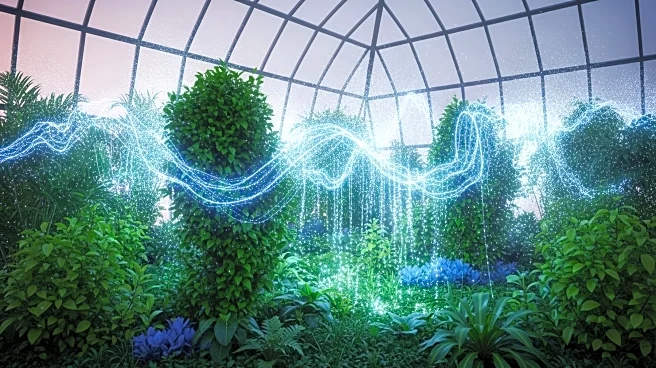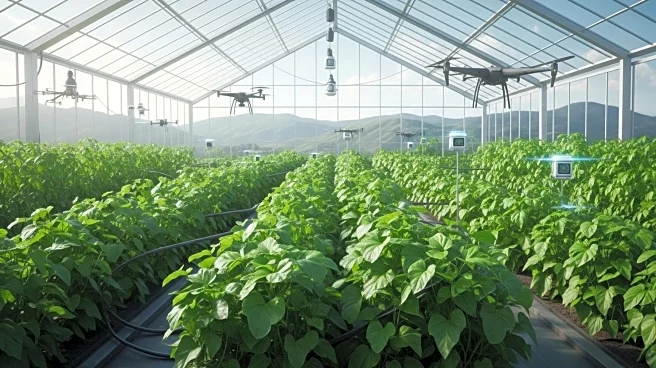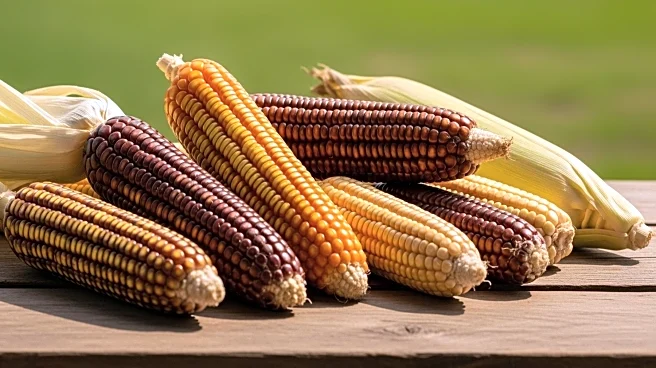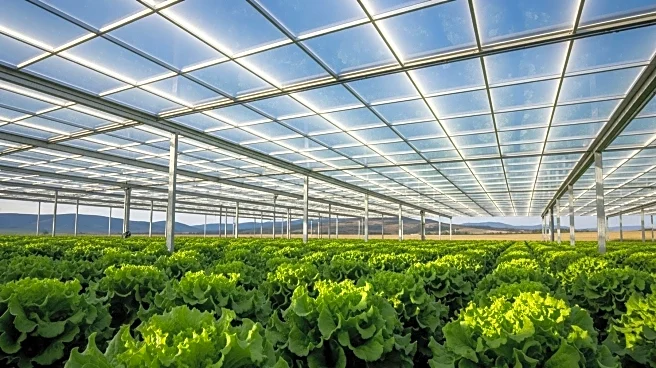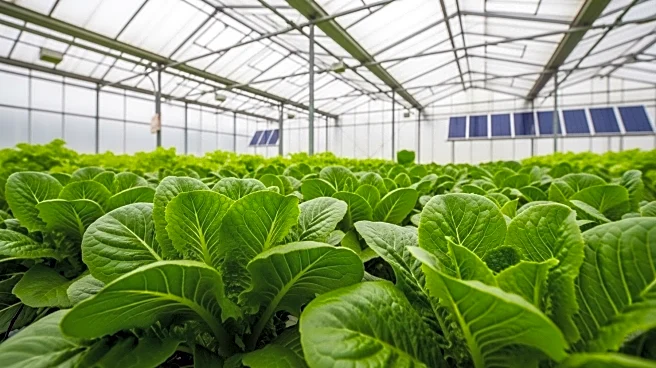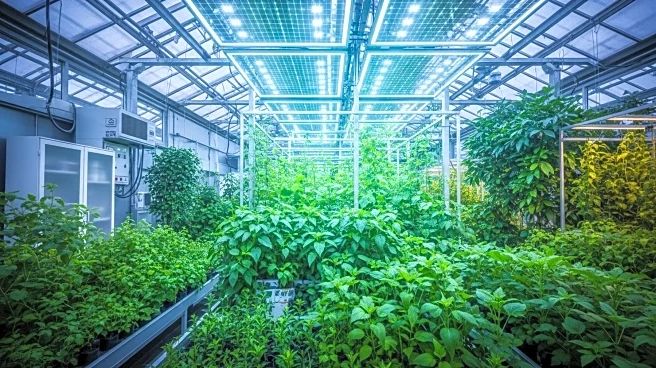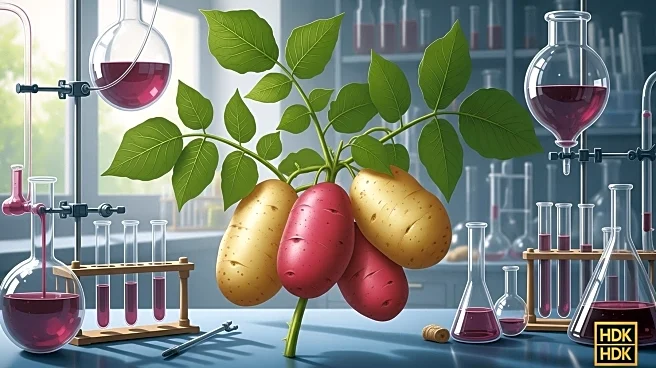What's Happening?
UbiQD has unveiled promising results from a USDA-funded study at the University of California, Davis, showcasing the benefits of their luminescent quantum dot (QD) laminated glass in controlled-environment agriculture. The study, published in Materials Today Sustainability, compared two greenhouses during a winter lettuce growing cycle—one with UbiQD's spectrum-optimized QD-glass and the other with standard glass. The QD-glass greenhouse demonstrated a 37.8% increase in fresh biomass, with plants nearly 40% heavier, indicating a significant rise in edible yield. Additionally, leaf area and root length grew by 38%, enhancing photosynthesis, water, and nutrient absorption, which improved plant resilience and shelf life. The QD-glass also increased light-use efficiency by 41%, optimizing light quality for growth without sacrificing photosynthetically active radiation.
Why It's Important?
This breakthrough in greenhouse technology is significant as it addresses challenges faced by the global food system, including climate change, resource scarcity, and increasing demand. By enhancing crop growth and nutrient uptake, UbiQD's QD-glass offers a sustainable solution for year-round production, especially in colder or energy-limited regions. The technology could lead to more productive and resilient food systems, reducing energy inputs while boosting output. This innovation aligns with the growing need for climate-smart agricultural practices, potentially transforming greenhouse farming and contributing to food security.
What's Next?
The study suggests that UbiGro glass could be a key step towards developing climate-smart greenhouses that integrate photonics and sustainable agriculture. As the technology gains traction, it may prompt further research and adoption in various agricultural sectors, potentially influencing policy and investment in sustainable farming practices. Stakeholders, including farmers, agricultural companies, and policymakers, may explore the integration of QD-glass in existing and new greenhouse facilities to capitalize on its benefits.
Beyond the Headlines
The use of quantum dot technology in agriculture highlights the intersection of advanced materials science and sustainable farming. This development may encourage further exploration of photonics in agriculture, potentially leading to innovations in other areas such as pest control and crop monitoring. Ethical considerations regarding the accessibility and affordability of such technologies for small-scale farmers may also arise, prompting discussions on equitable distribution of technological advancements.

